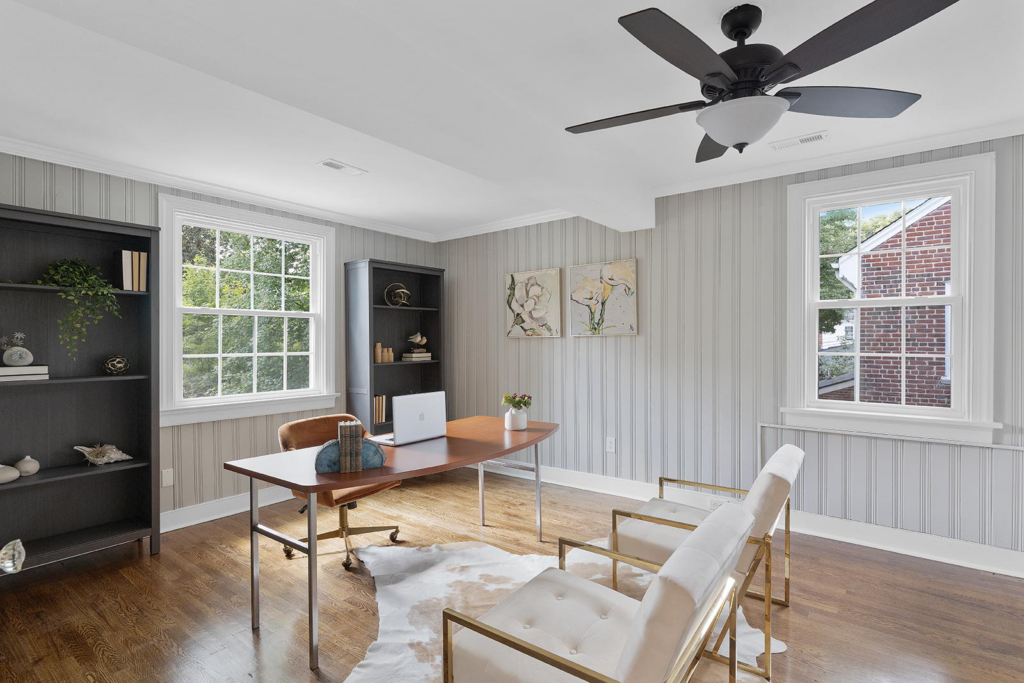When selling a high-end home, the goal is often to appeal to discerning buyers who are looking for both style and substance. This is where luxury staging comes into play, differentiating itself from traditional home staging services by offering a more elevated, personalized experience. Both approaches aim to present the home in its best light, but they vary significantly in their strategies, aesthetics, and target markets. Let’s explore the key differences between luxury staging vs traditional staging and how each can benefit a seller.
What Is Traditional Home Staging?

Traditional home staging is about making a home more attractive to potential buyers by creating a neutral, welcoming environment. The primary goal is to showcase the home’s best features and allow buyers to envision themselves living there. Traditional staging often involves decluttering, rearranging furniture, and selecting neutral decor to appeal to a broad audience. It is a cost-effective approach that helps the property stand out in a competitive market without excessive investment.
What Is Luxury Staging?
Luxury staging takes home staging to the next level. It is tailored specifically for high-end properties that require a sophisticated, refined look to attract discerning buyers. Luxury staging services go beyond simple decluttering; they involve detailed planning, high-quality furnishings, and a keen understanding of design trends that appeal to wealthy buyers. Every element is meticulously chosen to create a cohesive, luxurious feel—think bespoke furniture, high-end artwork, designer fabrics, and custom lighting.
Key Differences Between Luxury and Traditional Staging
- Aesthetic Appeal: Traditional staging typically uses a more neutral palette and simple, functional furniture that suits a wide range of buyers. Luxury staging, on the other hand, incorporates rich colors, luxurious materials, and high-end furnishings that make a statement. It aims to evoke an emotional response and create a sense of exclusivity that resonates with high-net-worth individuals.
- Target Market: Traditional staging is designed to attract a broad spectrum of buyers, from first-time homeowners to move-up buyers. Luxury staging, however, targets a niche market of affluent buyers who are looking for premium properties. The staging is customized to reflect their lifestyle preferences, whether it’s a sleek contemporary design or a classic, elegant look.
- Investment: Luxury staging requires a more substantial investment in both time and money. It involves selecting high-quality pieces, hiring professionals to arrange them, and sometimes even creating bespoke items that fit the home’s specific layout and architecture. Traditional staging, while still valuable, is more budget-conscious and focuses on cost-effective ways to highlight a home’s best features.
- Market Time and ROI: While traditional staging can shorten a property’s time on the market and lead to quicker offers, luxury staging can further enhance the perceived value of a property. In some cases, homes that are luxury staged sell for higher prices than their unstaged counterparts. The investment in luxury staging can pay off by attracting the right buyers who are willing to pay a premium for a turnkey luxury home.
Conclusion
Understanding the differences between luxury and traditional staging is crucial for sellers looking to maximize their home’s appeal. While both approaches share the same goal of showcasing a property’s best features, luxury staging takes it a step further by creating an upscale, personalized experience that attracts high-end buyers.
Ensure Profitable Property Sales with Home Staging Services from Dila Design
Ready to elevate your property’s market appeal? Dila Design offers expert home staging services tailored to both traditional and luxury staging needs in Richmond VA. Contact us today to discover how we can help you present your property in the most compelling way possible.
